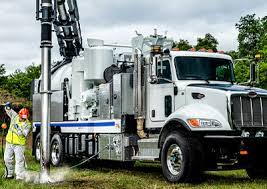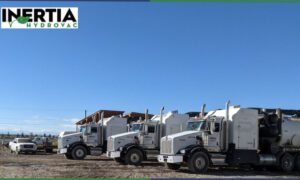Hydrovac excavation is a process that uses a high-pressure water jet to loosen the dirt and a powerful vacuum to remove it. Compared to other excavation methods, this procedure is effective and environmentally friendly. It has many industrial implementations, such as the removal of debris, line installation, etc.
Top 5 Best Procedures To Follow
While being an efficient and environment-friendly process, hydrovac comes with its risks. Construction teams may reduce the likelihood of incidents that might result in work-related injuries or even fatalities by taking the time to assess the risks and hazards of a project. The staff must stick to the methods listed below to excavate risk-free.
- Locate Underground Utilities
Because hydrovac services involve trenching, there is a chance that it will unintentionally hit or harm pre-existing subsurface facilities. Some subterranean utilities, including telecom cables, pose little to no risk to the safety of construction workers. At worst, impacted regions may experience annoyance due to this kind of infrastructure damage. However, depending on where the project site is, subterranean infrastructure can include utilities that could be hazardous, such as natural gas and power lines. Injuries or fatalities to the workers may come from fires, explosions, or electrocution caused by damaged power lines.
- Put appropriate signage
Placing pertinent information at workplace entrances and other locations is likely to be viewed as part of employing suitable signage on a hydrovac job site. In addition to warning workers of possible risks on the job site, appropriate signage enforces safe working procedures and motivates employees to recognize and report risks. U may also use universal signs to warn the public.
Following the site’s location, signage should inform visitors and passersby who enter or pass by the building site of the dangers. When accessing the site, make sure everyone is wearing personal protective equipment (PPE) and when excavations are underway, place a sign that says “Danger” close to the vehicle. This is crucial when working near exposed, isolated, or powered wires. The distance between these signs and the truck should not exceed 3 meters (10 feet).
- Ensure that workers are trained
Personnel engaged in excavation operations should be well-trained in meeting accepted safe work practices and industry requirements. Additionally, workers should receive enough training to utilize their equipment, following the manufacturer’s suggested practices and guidelines.
- Pay Attention to Overhead Wires
Since the overhead wires supply electricity to the entire area, they carry 220 volts, which would instantly kill a person who came into touch with them. The Hydrovac trucks include equipment that may expand as needed, increasing the probability of contact with the overhead cables; hence when setting up the equipment, safe movement distances should be observed. Following local or regional rules and regulations, workers and equipment should maintain a precise distance from overhead lines, especially when the voltage of the lines is unknown.
Some of these trucks have built-in sensors programmed to avoid overhead cables.
- Use the Right Pressure
Hydrovac excavations are regarded as having a minimal impact because they don’t involve mechanical cutting equipment. On the other hand, water pressures can have enough strength to sever or break underground wires if they are too high. Water pressures of roughly 2000 psi are adequate for most applications, while the precise suggested pressure varies on several site-related considerations.
Conclusion
If a team provides hydrovac in Calgary or your area, they should implement these precautions to prevent the risk of injuries. These precautions will ensure that the job is done without damaging the personnel, hydrovac equipment, or even the surroundings.






























